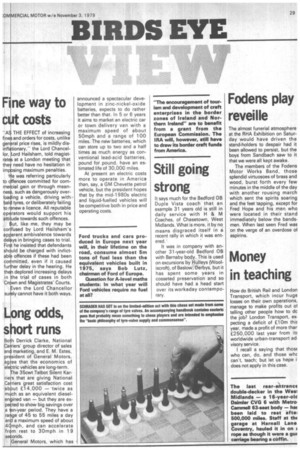ng odds, short runs
Page 31

If you've noticed an error in this article please click here to report it so we can fix it.
Both Derrick Clarke, National Carriers group director of sales and marketing, and E. M. Estes, president of General Motors, ag ee that the economics of eletric vehicles are long-term.
he 35cwt Talbot Silent Karrie s that are giving National Ca riers great satisfaction cost about £14,000 — twice as much as an equivalent dieselengined van — but they are expetted to show big savings over a ten-year period. They have a range of 45 to 55 miles a day and a maximum speed of about 4 mph, and can accelerate frcjm rest to 30mph in 19 seconds.
General Motors, which has announced a spectacular development in zinc-nickel-oxide batteries, expects to do rather better than that. In 5 or 6 years it aims to market an electric car or town delivery van with a maximum speed of about 50mph and a range of 100 miles. The new batteries, which can store up to two and a half times as much energy as conventional lead-acid batteries, pound for pound, have an estimated life of 30,000 miles.
At 'present an electric costs more to operate in America than, say, a GM Chevette petrol vehicle, but the president hopes that by the mid-1980s electric and liquid-fuelled vehicles will be competitive both in price and operating costs.




























































































































